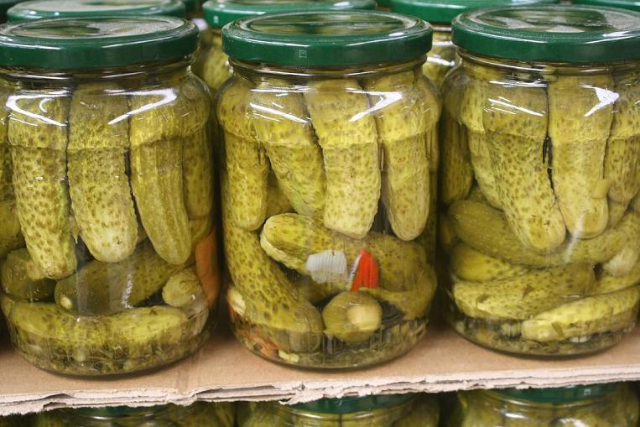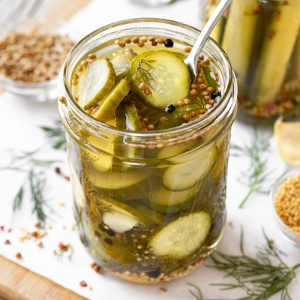There’s an old maxim that every dog has its day. And I believe that’s also true for every iconic food. It certainly is for the Pickle! Let’s take a snapshot of the Foodscape and see if we can come up with a sort of ‘State of the Pickle’ report…

Disclaimer:
This post will focus solely on the classic cucumber pickle – albeit in its many forms. There are myriad other pickle forms and flavours out there, from all parts of the world. Accordingly, we’ll celebrate Korean pickles on National Kimchi Day (if there is one.) And so on.
A little history
Pickles have been around for a long time. Longer than I was initially aware. In fact, The History Channel says they’ve been around for thousands of years. And they’ve been a favourite food of royalty and ordinary folk, alike:
“Cleopatra swore by them. So did Julius Caesar and Napoleon Bonaparte. Pickles got their start more than 4,000 years ago, when ancient Mesopotamians began soaking cucumbers in acidic brine, as a way to preserve them. Since then, they have been a staple in cultures around the globe, renowned for their heartiness, health benefits and delicious taste.
“Pickles were first brought to America by Christopher Columbus. (Like many explorers, he loved traveling with them because they could survive the long journeys, and they helped prevent scurvy.) By the 19th century, H.J. Heinz Company, Inc. had cornered the market, thanks to some truly ingenious marketing strategies. By the 2010s, Americans alone were eating more than 2 million pounds [909,000 kg] of pickles a year.”
Couldn’t have said it better myself.
Simple is beautiful
Cucumber pickles are basically nothing more than cucumbers of an appropriate size and texture cured in brine. But over their history, many intrepid culinarians have developed a plethora of method and flavour tweaks that today define distinct cultural and historic influences.
Because salt preserves food, pickling has been widely adopted in Northern regions as a way to store summer foods for use over the colder months.
But today, pickles are considered a year-round staple. They’ve cemented their roles as sidekicks to, and components of, many classic sandwiches. Classic Green Hamburger Relish is finely chopped Sweet Cucumber Pickles with a little added sugar to balance the salt. And no savoury deli dish is complete without a (longitudinally) quartered Kosher Dill on the side.
Three main methods of pickle packing
There are three main methods of pickle packing in use today. Any pickle you’ll find at a supermarket or deli will have been made using one of these procedures. The Ultimate Guide to Different Types of Pickles explains:
Refrigerated: Fresh cucumbers are submerged into jars with a pickling liquid of water, canning salt, and pickling spices and immediately put into the refrigerator. Pickles made with the refrigerated method produce ultra-crispy pickles but have the shortest shelf life of the three pickling methods.
Processed: Also known as “cured” or “fermented”, processed pickles are added into a jar and covered in a salt-and-water-calculated brine. After being fermented for a few months, the pickles are taken out, rinsed, and submerged in a new liquid with pickle seasonings. This method takes the longest to prepare but has the sharpest and funkiest flavor.
Fresh-Packed: The fresh-packed pickling method uses vinegar and pickle seasonings to preserve the cucumbers, which are then vacuum-sealed, pasteurized, and cooled, creating a shelf-stable product until the jar is opened. Fresh-pack pickles keep a lot of their color, are crispier than processed pickles, but aren’t as crispy as refrigerated. They’re also more flavorful than refrigerated pickles, but not as pungent as fermented pickles.
A rich flavour spectrum
Different cultures (and individual pickle packers) have explored the full flavour spectrum. The once-humble Cucumber Pickle is now available in classic dill, Kosher dill (full sour and half sour), sweet, garlic, spicy, Bread and Butter, Russian style and Hungarian style. And within those categories you’ll find an almost infinite variety of spice blends.
Gherkins and Cornichons are very small (sometimes referred to as ‘baby’) cucumbers, pickled in the usual way. The Cornichon is a specific French variant. Traditional Gherkins and Cornichons vary subtly in flavour and pickling technique from classic full-sized Dills.
Try making your own!
It’s really easy. And if your Grandma (or Mom, depending on how old you are) is still around, she can probably share with you invaluable tips and tweaks, not to mention treasured family recipes for the kind of pickles you grew up with!
~ Maggie J.

